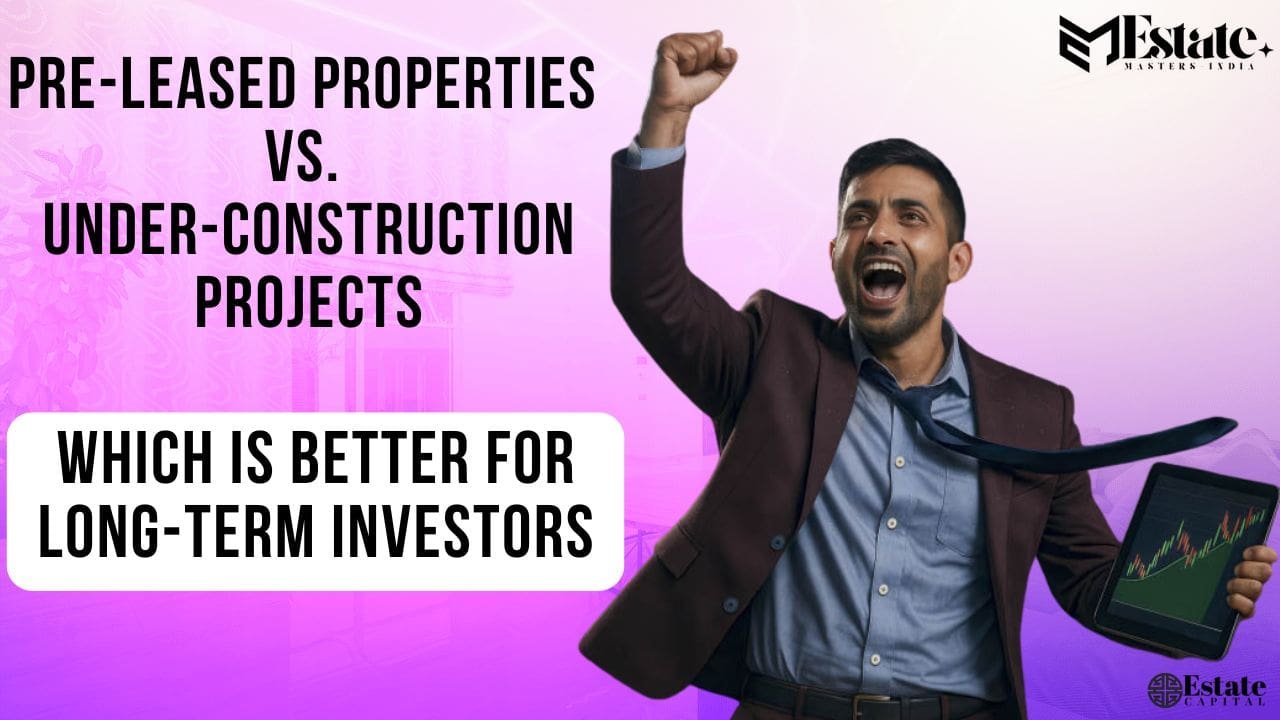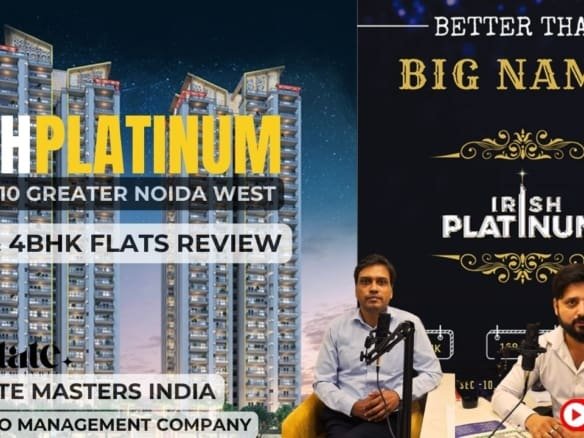Real estate has always been one of the most trusted investment avenues in India. With the rise of structured opportunities like pre-leased commercial spaces and under-construction residential or commercial projects, investors today have more choices than ever. But when it comes to long-term wealth creation, which option truly stands out — pre-leased properties or under-construction projects?
Let’s break down the pros, cons, and long-term value of both.
✅ What Are Pre-Leased Properties?
A pre-leased property is a commercial or retail space already rented out to a tenant, such as a bank, MNC, or retail brand. Investors buy it with an assured rental income from day one.
Advantages of Pre-Leased Properties
- Immediate Returns – Investors start earning fixed rental income from the date of purchase.
- Lower Risk – Tenants are already onboarded, reducing vacancy uncertainty.
- Stable Long-Term Leases – Many pre-leased deals come with 9–15 year lock-ins with reputed brands.
- Attractive ROI – Average rental yields in India range from 6–9% annually, higher than residential rentals.
- Easy Exit Value – Since they generate income, pre-leased assets often enjoy better resale demand.
Limitations of Pre-Leased Properties
- Higher initial ticket size compared to residential projects.
- Capital appreciation is often slower than under-construction assets.
- Limited scope for personal use, as these are primarily commercial investments.
✅ What Are Under-Construction Projects?
Under-construction properties are real estate projects still being built, whether residential apartments, villas, or commercial offices. Investors buy them at launch stage or early construction phases, aiming for capital appreciation upon possession.
Advantages of Under-Construction Projects
- Lower Entry Cost – Prices are usually lower at launch compared to ready-to-move properties.
- High Appreciation Potential – As construction progresses, property value tends to rise.
- Flexible Payment Plans – Developers offer installment-based or construction-linked plans.
- Personal Use Option – Buyers can move in or lease out once the project is complete.
Limitations of Under-Construction Projects
- Delayed Possession Risks – Many projects face construction delays.
- No Immediate Income – Returns are dependent on future sale or rental.
- Regulatory & Builder Risk – Especially if the developer lacks a strong track record.
- Market Fluctuations – Prices may stagnate if demand slows during the construction period.
📊 Pre-Leased vs. Under-Construction: A Quick Comparison
| Factor | Pre-Leased Properties | Under-Construction Projects |
|---|---|---|
| Returns | Immediate rental income (6–9% yield) | No income until completion |
| Risk | Low (tenant secured) | Higher (construction + market risks) |
| Capital Appreciation | Moderate, steady | High potential, but uncertain |
| Liquidity | Easier resale due to income stream | Dependent on market sentiment |
| Investment Horizon | 7–15 years (stable income) | 5–10 years (value appreciation) |
| Best For | Investors seeking stable passive income | Investors seeking higher risk-return growth |
🏆 Which is Better for Long-Term Investors?
The choice depends on your investment goals:
- If you want steady, low-risk income with long-term security, pre-leased properties are ideal. They are especially suitable for HNIs, NRIs, and portfolio diversification.
- If you’re willing to take on higher risks for higher capital appreciation, then under-construction projects may deliver stronger growth — provided you choose the right location and builder.
💡 Final Thoughts
In today’s evolving real estate market, a balanced portfolio often works best. Many seasoned investors allocate funds to both pre-leased assets (for assured income) and under-construction projects (for appreciation potential).
At Preleasestate, we specialize in helping investors discover high-quality pre-leased properties across India that deliver steady income and long-term value. Whether you’re looking for a commercial office, retail space, or bank lease property, our experts can guide you towards the right fit for your portfolio.






Join The Discussion